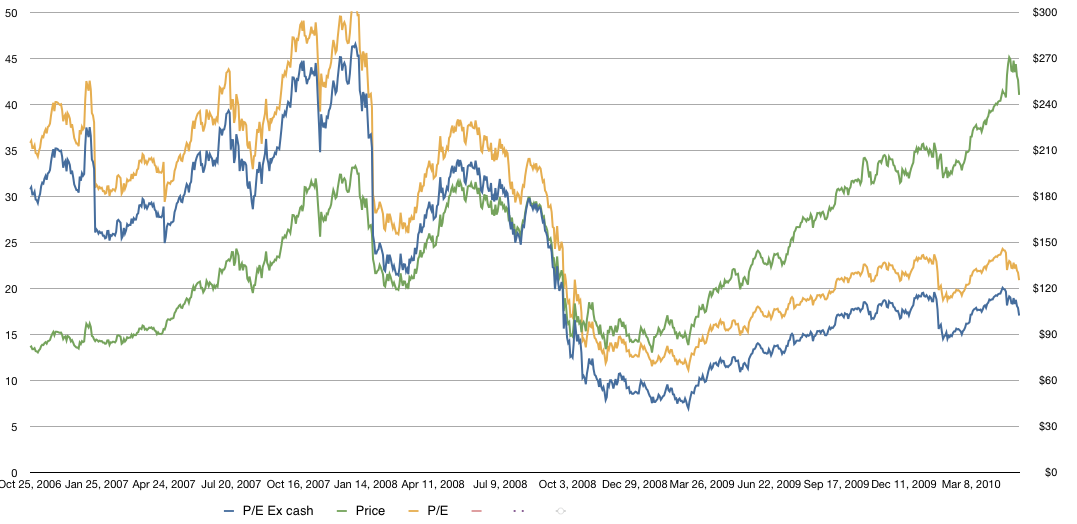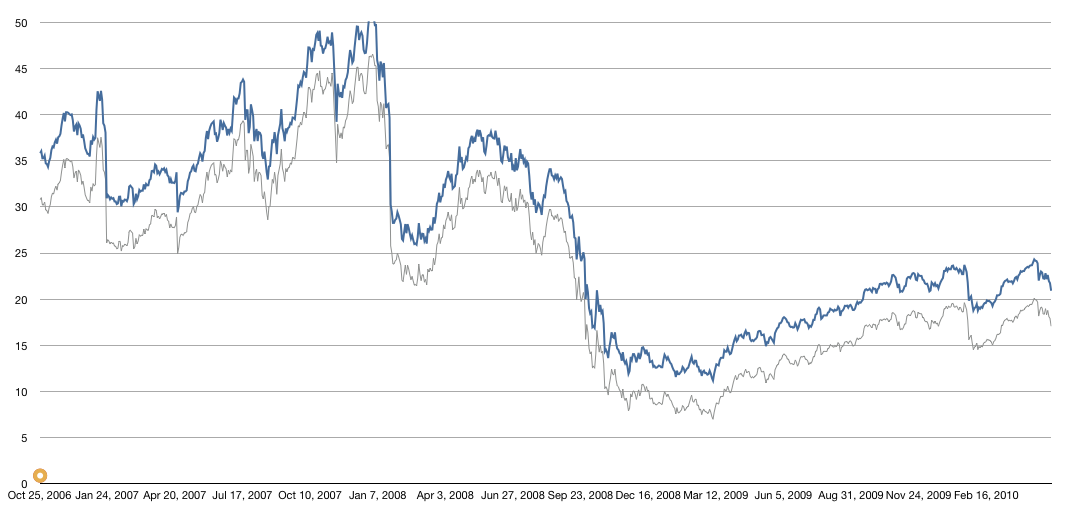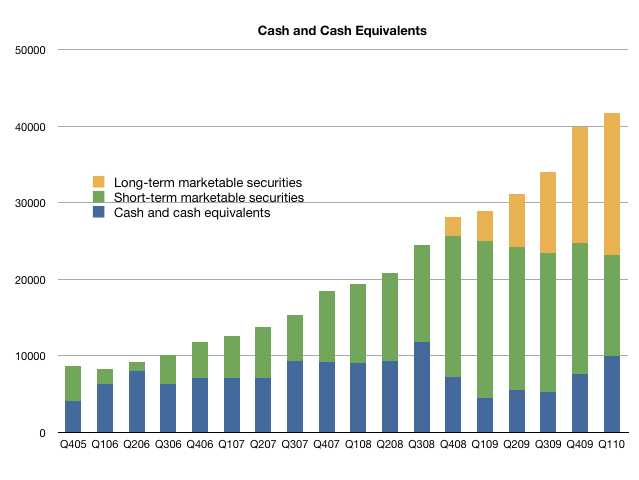Apple, with its $50 a share in cash, could earn as much as $17 to $20 a share in 2011, which means the stock is trading at a cheap 12.5 times next year’s earnings. Cramer said even if Apple hits his $300 target, the stock will still be cheap trading at just 15 times earnings.
“That’s less than almost every single growth stock I follow,” Cramer said, “and even less than the S&P 500’s multiple.”
via Jim Cramer Predicts Apple Inc. (NASDAQ:AAPL) will hit $300 a Share | Madd Money.
S&P forecasts the S&P 500 average P/E for 6/30/2010 at 22.57.
Readers of this blog may recall that I noticed Apple’s discounted valuation several times.






